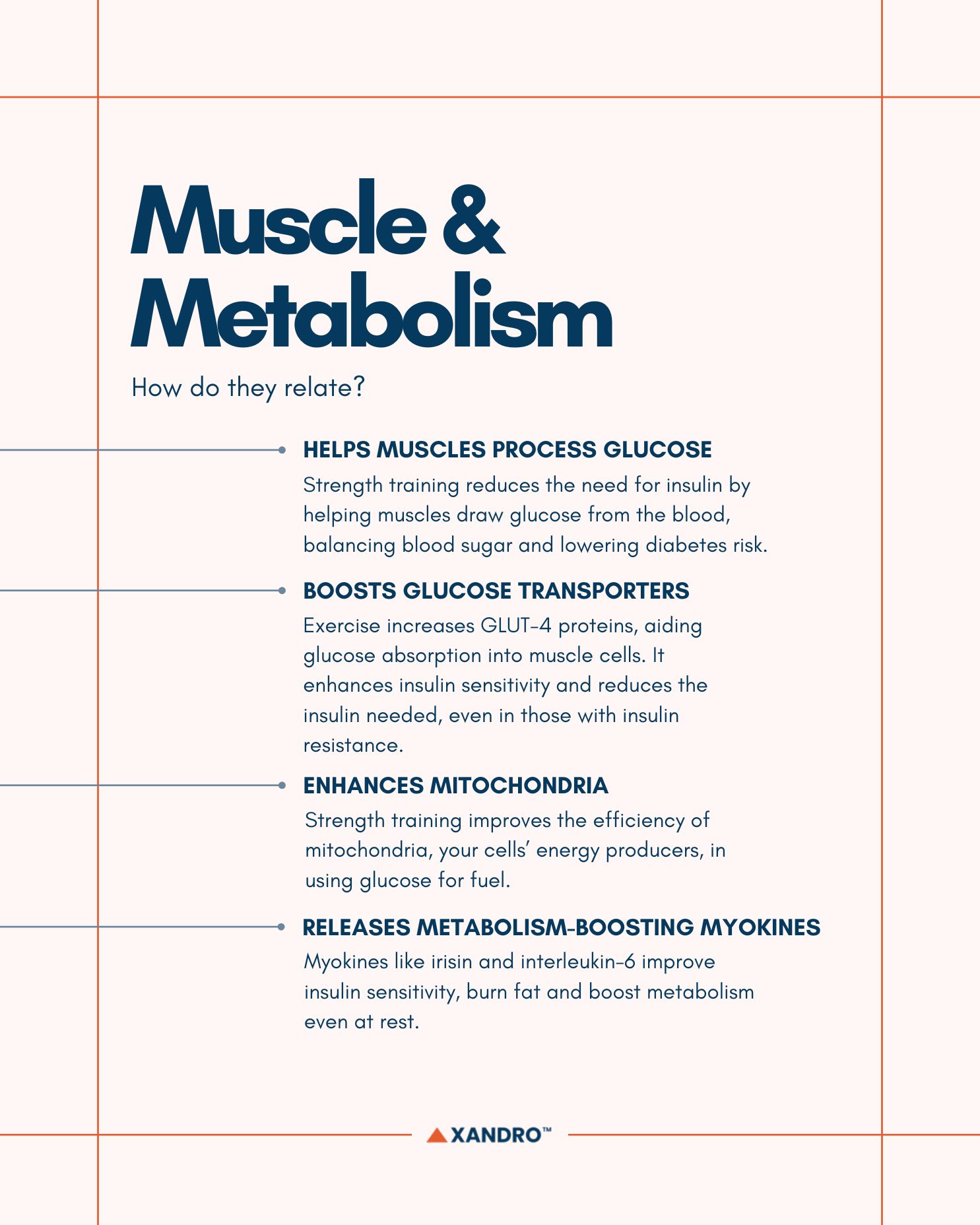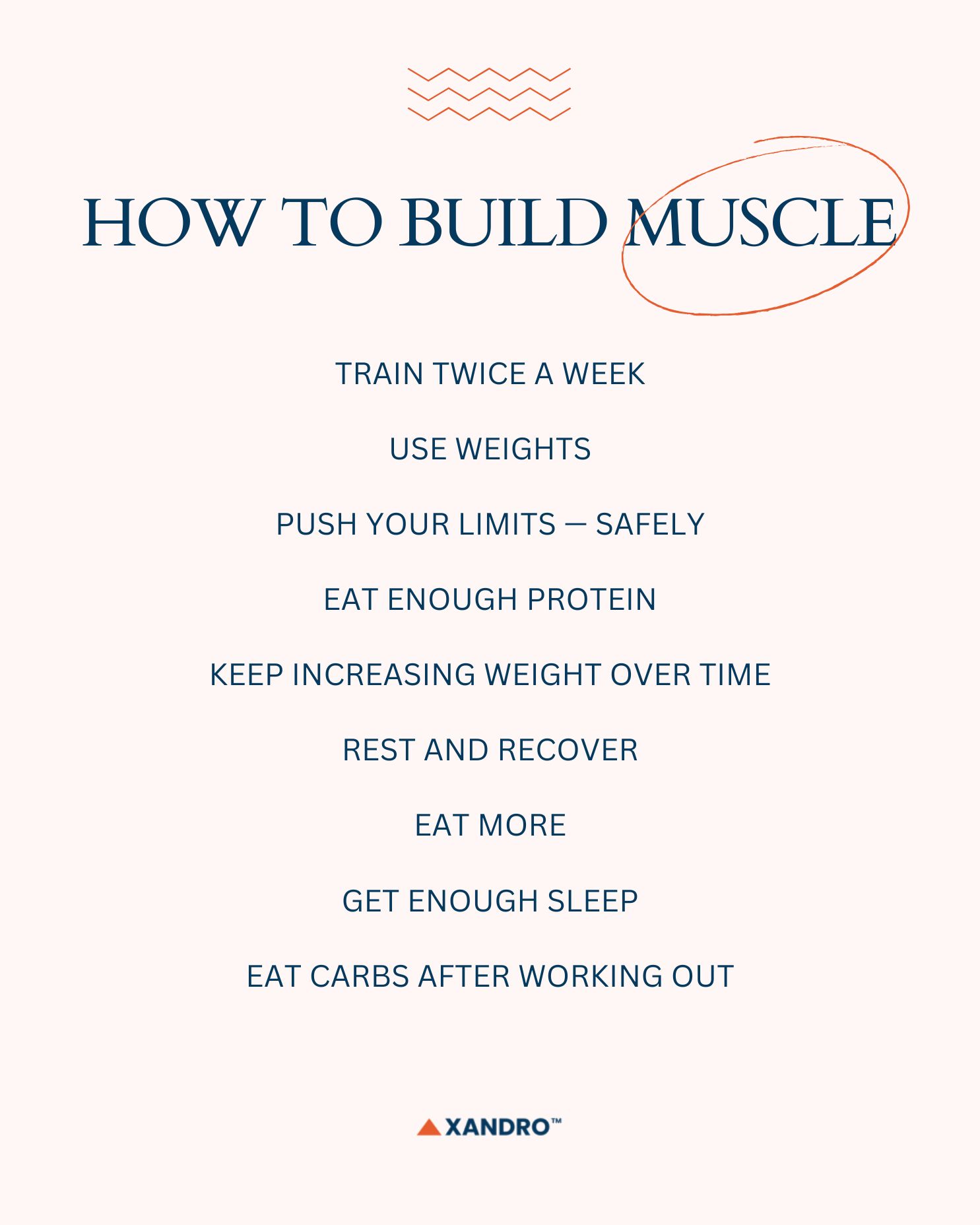How Muscles Impact Metabolism: Myths, Damage & Metabolic Rate
18th Dec 2024
Why Building Muscle is a Game-Changer for Your Metabolic Health
When it comes to improving your health, losing weight or simply feeling better, most people think about cardio or cutting calories. But here's a game-changing tip: building muscle can be one of the best things you do for your metabolic health — and your overall fitness.
If you're someone who's working out to shed fat, avoid health problems like diabetes or just boost your energy, understanding why muscles matter might give you the motivation to pick up those weights or add some strength training to your weekly routine.
Jump there now:
- What Makes Muscle So Important?
- How Does Muscle Affect Metabolism?
- How to Build Muscle Effectively
- What About Burning Calories at Rest?
Products related to this article on muscles and metabolism:
Your muscles aren’t just for moving your body or looking toned — they play an important role in your body's metabolism. They’re like your body’s engine, processing more than 80 per cent of the glucose (sugar) you get from food.
When you have more muscle:
- You improve insulin sensitivity: This means your body uses insulin more efficiently to lower blood sugar, reducing your risk of insulin resistance (a major factor in Type 2 diabetes). Those who do no strength training are 2.4 times more likely to be insulin resistant than those who do 1 to 2 hours of strength training each week.
- You burn calories more effectively: Muscle tissue burns slightly more calories than fat tissue, even at rest. This is because muscle plays a role in your basal metabolic rate (BMR) and muscle mass metabolic rate as muscle mass requires energy to maintain.
- You release special proteins called myokines: These proteins do everything from improving how your body uses energy to turning bad fat (white fat) into healthier, energy-burning fat (brown fat).
Further Reading: Why is BMR Important for Weight Loss?
Even just two strength-training sessions a week can provide incredible benefits:
- Helps Your Muscles Process Glucose
- Muscles use glucose for energy. When you lift weights or do resistance exercises, your muscles don’t need as much insulin to pull glucose from your blood. This keeps blood sugar levels balanced and lowers your diabetes risk.
- Increases Glucose Transporters
- Strength training increases proteins in your body like GLUT-4, which help move glucose into muscle cells. More GLUT-4 means more glucose gets burned as fuel rather than hanging around in your bloodstream.
- One study found that strength training helps cells absorb glucose better by improving a process involving a molecule called AS160. Normally, insulin triggers a reaction that allows glucose transporters (GLUT-4) to move to the cell's surface and let glucose in. In people with diabetes or insulin resistance, this process is less efficient, requiring more insulin. Strength training improves this process, making the cells more sensitive to insulin and reducing the amount needed.
- Improves Mitochondria Function
- Mitochondria are like power plants in your cells, converting glucose into energy. Resistance training doesn’t just make your muscles bigger — it makes these power plants stronger and more efficient at using glucose for energy.
- Releases Metabolism-Boosting Myokines
- Myokines like irisin help turn white fat into brown fat, which burns calories even when you’re not exercising. Another myokine, interleukin-6, helps improve insulin sensitivity and fat burning.
Further Reading: How to Increase Metabolism

If you're ready to build more muscle for better long-term health, here’s how to start:
1. Train Twice a Week
You don’t need to live at the gym! Studies show that two full-body workouts per week can deliver noticeable metabolic and strength benefits. Focus on exercises like squats, push-ups, deadlifts and rows that work multiple muscle groups at a time.
2. Push Your Limits (Safely)
To grow muscle, you need to challenge your body. Whether you’re lifting lighter weights for more reps or heavier weights for fewer reps, make sure your muscles are working hard by the end of each set. Aim to stop about 1–3 reps short of complete exhaustion.
3. Eat Enough Protein
Protein is the building block of muscle. To build and maintain muscle:
- Eat 0.8g of protein per kilogram of body weight daily if you’re maintaining your weight, although it’s recommended to up this to 1.2–1.6g/kg.
- Increase to 1.6–2.2g per kg if you’re trying to lose weight.
- Eat up to 2g/kg of protein per day to build muscle.
Further Reading: Protein and Longevity: How it Affects Ageing and Muscle Health
Your muscles adapt quickly, so it’s important to increase the weight, reps or sets over time. This concept, called progressive overload, means you continue to grow stronger and get the metabolic benefits of more muscle.
5. Rest and Recover
Muscle grows while you rest, not during the workout itself. Take at least one day off between strength sessions and get plenty of sleep to allow your body to repair and build new muscle.
Further Reading: Magnesium and its Benefits on Muscles

Yes, muscle burns more calories than fat — even when you’re lounging on the couch, but don’t believe the metabolism myth that a pound (0.45g) of muscle burns 50 calories a day. The truth? A pound of muscle burns about 5–6 calories daily, compared to 2–3 calories for a pound of fat. While this difference isn’t huge, it adds up over time, especially if you build 10–20 pounds (4.5–9kg) of muscle.
Further Reading: Calcium AKG and its Benefits on Muscle Recovery
End Note
Building muscle isn’t just about looking good — it’s a powerful tool for improving your metabolic health, managing your weight and reducing your risk of serious diseases like diabetes. The best part? You don’t need a fancy gym membership or hours of daily training. Start small, stay consistent and fuel your body with enough protein to keep those muscles growing strong.
Calcium AKG may benefit your muscle-building journey as it boosts the Krebs Cycle, a cellular energy process, increases muscle mass and bone density as well as supports post-injury healing. You can read all about the scientific studies behind it here.
Further Reading: Muscles and Menopause
Products related to this article:
